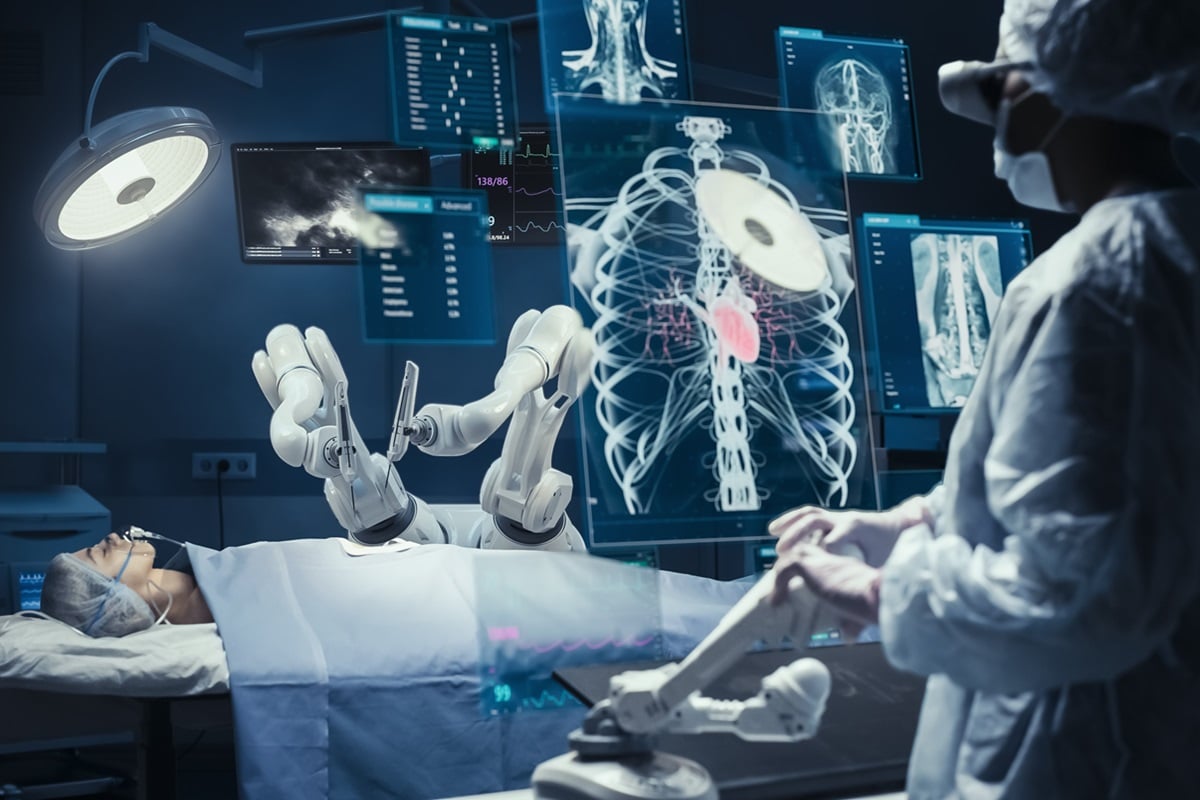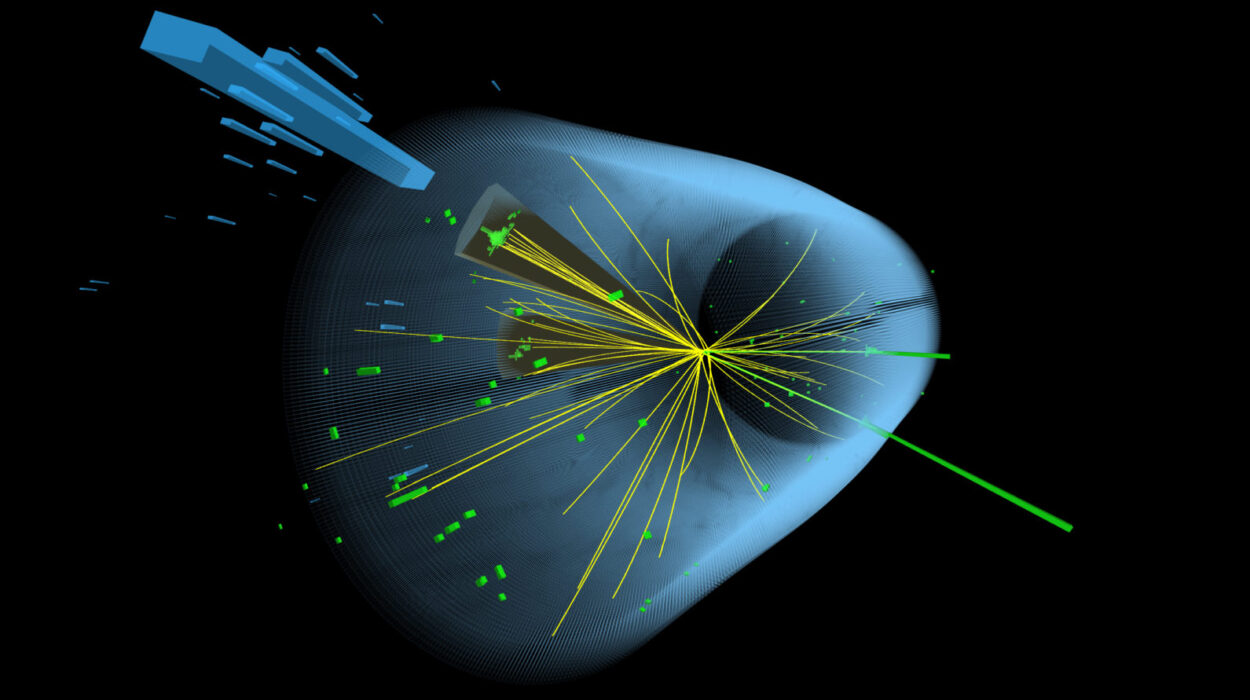Robotics is rapidly transforming the landscape of modern medicine. What was once a futuristic concept confined to science fiction has now become an integral part of operating rooms, rehabilitation centers, and even home-based healthcare. The convergence of robotics, artificial intelligence (AI), and advanced data analytics is revolutionizing patient care, diagnostics, surgery, and hospital management. As technology continues to evolve, the future of robotics in healthcare promises to be one of precision, personalization, and unprecedented efficiency.
The healthcare industry faces growing challenges—ranging from aging populations and physician shortages to rising costs and the need for more precise, less invasive treatments. Robotics offers powerful solutions to these challenges, enabling doctors and caregivers to provide higher-quality care with fewer errors and greater consistency. From robotic-assisted surgeries to automated pharmacy systems and social companion robots, this new generation of machines is reshaping the way humans experience medicine.
The future of robotics in healthcare will not merely be about replacing human labor but augmenting it—extending human capabilities, improving outcomes, and ensuring that healthcare becomes more accessible, personalized, and humane.
The Evolution of Robotics in Medicine
The use of robotics in healthcare has evolved significantly over the past few decades. The earliest applications emerged in the late 20th century, primarily in surgical assistance. In 1985, the PUMA 560 robot performed one of the first documented robot-assisted neurosurgical biopsies, marking a new era in medical innovation. This was followed by the introduction of the da Vinci Surgical System in the early 2000s, which revolutionized minimally invasive surgery through robotic precision and dexterity.
These early systems relied on mechanical precision and surgeon-controlled movements, providing enhanced visualization, stability, and accuracy. Over time, as computing power and AI advanced, robotic systems gained the ability to perform more complex tasks, such as autonomous suturing, image-guided navigation, and adaptive motion control.
Today, robotics in healthcare extends far beyond surgery. Robots now assist in diagnostics, rehabilitation, elderly care, drug delivery, disinfection, and logistics. The future will likely witness even deeper integration of robotics across every aspect of healthcare delivery—from operating theaters to patient wards and homes. This evolution is driven by several technological trends, including AI-driven decision-making, 5G connectivity, miniaturization of sensors, and breakthroughs in soft robotics.
Robotic Surgery: Precision Beyond Human Capability
One of the most transformative applications of robotics in healthcare is in surgery. Robotic-assisted surgery allows physicians to perform complex procedures with enhanced control, flexibility, and precision. Systems such as the da Vinci robot, Stryker’s Mako system for orthopedic procedures, and Medtronic’s Hugo RAS platform have already demonstrated the advantages of robotic integration in surgical practice.
In the coming decades, robotic surgery will likely evolve toward increasing levels of autonomy. Current systems primarily rely on surgeon control, but the next generation will incorporate AI algorithms capable of learning from thousands of previous surgeries, providing real-time feedback and even suggesting optimal surgical paths. Autonomous suturing, adaptive incision adjustments, and AI-driven safety monitoring are becoming reality.
Miniaturization will also play a key role. Micro-robots capable of entering the human body through tiny incisions or natural orifices may soon perform delicate internal repairs, deliver targeted drugs, or collect tissue samples without the need for major surgery. Such developments could drastically reduce recovery times, hospital stays, and postoperative complications.
The integration of real-time imaging, augmented reality (AR), and haptic feedback will enhance the surgeon’s experience even further. Surgeons will be able to visualize 3D models of organs during operations, feel the texture of tissues through tactile sensors, and navigate complex anatomical structures with unparalleled accuracy. This hybrid of human intelligence and robotic precision will define the future of surgery.
Robotics in Diagnostics and Imaging
Early and accurate diagnosis is critical to successful treatment. Robotics and AI are making diagnostic procedures faster, safer, and more reliable. Robotic imaging systems can precisely position scanners, manipulate instruments, and assist in biopsies guided by real-time imaging.
In radiology, robotic arms equipped with imaging sensors can move around patients, capture high-resolution images from optimal angles, and reduce exposure to radiation. Robots also enable remote diagnostic procedures, allowing specialists to perform ultrasounds or endoscopies from different locations through teleoperated systems.
Laboratory automation is another field revolutionized by robotics. Robots can handle repetitive tasks such as sample sorting, slide preparation, and chemical analysis with incredible speed and accuracy. As AI-driven diagnostic algorithms continue to improve, robotics will play a vital role in linking imaging, laboratory, and clinical data for comprehensive patient assessment.
Future diagnostic robots may integrate molecular imaging, nanotechnology, and biosensors to detect diseases at their earliest molecular stages. For instance, nanoscale robotic probes could one day navigate the bloodstream, identify cancerous cells, and report their locations in real time. Such innovations would redefine preventive medicine, making it proactive rather than reactive.
Rehabilitation and Assistive Robotics
Rehabilitation is a critical phase of patient recovery, particularly after stroke, spinal injuries, or orthopedic surgery. Robotic rehabilitation devices are already helping patients regain mobility, strength, and independence through repetitive, precisely controlled movements.
Exoskeleton robots such as those developed by Ekso Bionics and ReWalk enable paraplegic patients to stand, walk, and even climb stairs. These wearable robotic systems not only restore movement but also improve cardiovascular health and reduce muscle atrophy. In rehabilitation centers, robotic arms and leg supports guide patients through physical therapy exercises with adaptive resistance, ensuring consistent and measurable progress.
In the near future, rehabilitation robots will become more personalized. AI-driven analytics will allow systems to adapt to each patient’s unique neuromuscular patterns, providing tailored exercises and real-time feedback. Sensors embedded in wearable devices will monitor muscle activation, joint angles, and heart rate to optimize therapy.
Additionally, soft robotics—made from flexible, biocompatible materials—will make rehabilitation devices safer and more comfortable. These soft robotic systems can conform to the human body, providing assistance that feels natural rather than mechanical. Combined with virtual reality (VR), patients will be able to engage in immersive rehabilitation environments that motivate and accelerate recovery.
Robotics in Elderly Care and Home Health Assistance
As populations age worldwide, healthcare systems face growing pressure to provide long-term care for elderly individuals. Robotics offers innovative solutions for assisting the elderly in maintaining independence, safety, and quality of life.
Social and companion robots such as PARO, Pepper, and ElliQ are already being used in nursing homes and private residences to provide emotional support, remind patients to take medications, and monitor their health. These robots can recognize faces, interpret speech, and respond with empathy, reducing loneliness and improving mental well-being.
Future elderly care robots will integrate advanced AI for natural conversation, emotional intelligence, and predictive health monitoring. For example, robots equipped with sensors could detect changes in gait or posture that indicate a risk of falling and alert caregivers before accidents occur. They could also monitor vital signs continuously, analyze trends, and communicate data to healthcare professionals remotely.
Home-assistance robots will help with daily tasks such as cooking, cleaning, and mobility support. With the growth of smart home ecosystems, these robots will interact with connected devices—adjusting lighting, controlling temperature, and ensuring safety. Such technologies will allow elderly individuals to live independently longer, reducing the burden on caregivers and healthcare facilities.
Robotics in Pharmacy and Hospital Management
Hospitals are complex environments where precision, timing, and coordination are vital. Robotics has begun to play a crucial role in streamlining hospital operations and improving efficiency. Automated pharmacy systems are capable of sorting, counting, and dispensing medications with near-perfect accuracy, reducing human error and freeing pharmacists for more patient-focused tasks.
Robotic systems such as TUG and Aethon’s autonomous delivery robots transport medications, meals, and medical supplies throughout hospitals, navigating corridors safely and efficiently. Surgical supply robots maintain sterile environments and ensure that operating rooms are stocked and ready for procedures.
In the near future, hospital robots will operate as part of integrated ecosystems, communicating with electronic health records, supply chain systems, and wearable patient monitors. AI algorithms will coordinate their movements and tasks to optimize workflow and minimize delays. This will allow hospitals to operate with higher efficiency, lower costs, and fewer logistical bottlenecks.
Pharmacy robotics will also continue to advance. Robotic compounding systems can prepare customized medications, such as chemotherapy drugs, under sterile conditions, minimizing contamination risks. Combined with blockchain-based tracking and AI-driven inventory management, medication delivery will become safer, faster, and more transparent.
Disinfection and Infection Control Robots
The COVID-19 pandemic underscored the need for infection control and sanitation in healthcare environments. Robots designed for ultraviolet (UV) disinfection, such as Xenex and UVD Robots, became essential tools in hospitals worldwide. These machines autonomously navigate rooms and use high-intensity UV light to eliminate pathogens on surfaces.
Future disinfection robots will integrate multiple sterilization methods, such as UV-C, hydrogen peroxide vapor, and ozone treatment. They will use AI-based mapping and environmental sensors to detect high-touch areas and adapt cleaning patterns accordingly. Such systems can also monitor air quality and provide early warnings of contamination.
These robots not only protect patients but also safeguard healthcare workers by reducing exposure to infectious environments. As hospitals continue to face challenges from antibiotic-resistant bacteria and emerging pathogens, robotic infection control will become a standard part of medical infrastructure.
The Integration of AI and Machine Learning in Healthcare Robotics
Artificial intelligence is the brain that brings healthcare robots to life. Through machine learning, robotics systems can process vast amounts of data, learn from experience, and make increasingly sophisticated decisions. AI allows robots to perceive their environment, interpret medical images, plan surgical movements, and interact naturally with humans.
In surgery, AI algorithms analyze preoperative scans to create optimal surgical paths and predict potential complications. In diagnostics, deep learning models detect patterns in medical images that even expert radiologists may overlook. In rehabilitation, machine learning systems personalize therapy by adapting to a patient’s progress in real time.
Natural language processing enables robots to communicate effectively with patients, answer questions, and interpret emotional cues. Combined with affective computing, future robots will not only perform tasks but also understand the emotional and psychological states of those they care for.
The integration of AI also allows for predictive analytics. Robots will be able to anticipate patient needs, detect early signs of deterioration, and suggest preventive interventions. This shift from reactive to proactive healthcare will reduce hospital admissions and improve long-term outcomes.
The Promise of Nanorobotics and Micro-Robotics
One of the most exciting frontiers in healthcare robotics is the development of nanorobots—microscopic machines designed to operate inside the human body at the cellular or molecular level. These robots could transform medicine by performing tasks that are impossible for conventional tools.
Nanorobots could deliver drugs directly to diseased cells, minimizing side effects and improving efficacy. For instance, cancer therapies could use magnetic or chemically guided nanorobots to target tumor cells precisely, avoiding damage to healthy tissue. Other potential applications include repairing damaged DNA, removing arterial plaque, and performing microscopic surgeries.
Micro-robots, slightly larger than nanorobots, are already being developed for minimally invasive procedures. They can navigate through blood vessels or digestive tracts, capturing images and collecting samples. Future systems will be able to swarm together, communicating and coordinating to perform complex tasks such as tissue repair or targeted therapy.
Although nanorobotics is still largely in the research phase, rapid advances in materials science, biocompatibility, and micro-fabrication are bringing these concepts closer to clinical reality. The fusion of nanotechnology and robotics represents a new paradigm for precision medicine.
Challenges and Ethical Considerations
Despite its enormous potential, the widespread adoption of robotics in healthcare raises several challenges and ethical questions. Safety remains the foremost concern. Robots operating in medical environments must adhere to strict reliability and precision standards, as even minor errors can have life-threatening consequences. Ensuring robust fail-safes and transparent regulatory oversight is essential.
Privacy and data security present additional challenges. As healthcare robots collect vast amounts of patient data, ensuring that this information remains confidential and protected from misuse is paramount. Ethical frameworks must address consent, data ownership, and the potential for algorithmic bias in AI-driven systems.
There are also questions about the human touch in medicine. While robots can perform technical tasks with extraordinary precision, empathy and emotional understanding remain deeply human qualities. Overreliance on robots could risk depersonalizing healthcare. The goal, therefore, should be to strike a balance where robots enhance rather than replace human connection.
Economic considerations are also important. Advanced robotic systems are expensive to develop and deploy, which may widen the gap between wealthy and under-resourced healthcare systems. Policymakers, healthcare providers, and technologists must collaborate to ensure equitable access to these technologies.
Education, Training, and Workforce Transformation
The integration of robotics in healthcare will reshape the medical workforce. Surgeons, nurses, and technicians will need to acquire new skills to operate, maintain, and collaborate with robotic systems. Medical schools are already incorporating robotics training into their curricula, emphasizing the importance of interdisciplinary education that combines medicine, engineering, and computer science.
Rather than replacing healthcare professionals, robotics will redefine their roles. Routine, repetitive, or dangerous tasks will increasingly be handled by machines, allowing humans to focus on higher-level decision-making, empathy, and patient engagement. This shift will require continuous learning and adaptation but promises to make healthcare work more efficient and fulfilling.
The Economic and Social Impact of Healthcare Robotics
The adoption of robotics in healthcare has far-reaching economic implications. While initial investments are high, robotic systems can ultimately reduce operational costs by minimizing surgical complications, reducing hospital stays, and improving efficiency. Automation in logistics and pharmacy management can free human resources for direct patient care, further optimizing costs.
Socially, robotics has the potential to democratize healthcare by expanding access to high-quality services in remote or underserved areas. Through telepresence and remote-controlled surgical systems, specialists can treat patients across the world without leaving their offices. This global accessibility may transform healthcare from a localized service to a distributed, interconnected system.
The Vision for the Future
The future of robotics in healthcare will be defined by seamless integration between human caregivers and intelligent machines. Hospitals will evolve into smart ecosystems where robots assist in every phase of care—from diagnostics to recovery. Patients will receive personalized treatment plans generated through AI analysis of their medical histories, genetic profiles, and real-time sensor data.
Surgical teams will collaborate with autonomous robotic systems guided by predictive algorithms. Rehabilitation will become a data-driven, interactive experience tailored to each individual’s biology. Elderly care robots will provide both companionship and continuous health monitoring, allowing seniors to live independently for longer.
In the longer term, the boundaries between biology and robotics may blur altogether. Advances in biohybrid robotics, where living tissues and artificial components work together, could lead to prosthetics that feel and respond like natural limbs or implants that repair themselves. The ultimate goal is not to mechanize medicine but to humanize it—to make care more accessible, precise, and compassionate through technology.
Conclusion
The future of robotics in healthcare represents one of the most profound transformations in human history. From the operating room to the patient’s bedside, robots are redefining what is possible in medicine. They enhance precision, expand accessibility, and relieve the growing burdens on healthcare systems.
As robotics continues to merge with AI, nanotechnology, and biotechnology, medicine will shift from reactive treatment to proactive wellness, from generalized care to personalized healing. Yet, amid all this technological advancement, the essence of healthcare—compassion, empathy, and the human spirit—must remain at the center.
The coming decades will witness an unprecedented partnership between humans and machines, one that holds the promise of a healthier, more equitable, and more intelligent world. The future of robotics in healthcare is not just about technology; it is about empowering humanity to care, heal, and thrive beyond the limits of today’s imagination.






